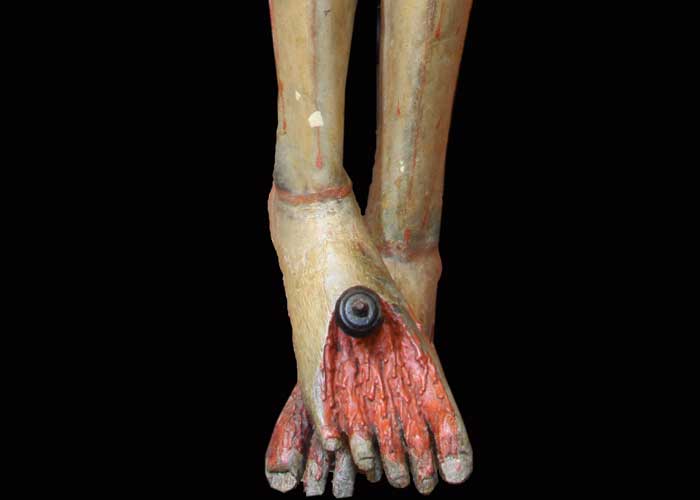
The historical relationship between the town of Muros and the sea gives us a rich heritage in the form of belfries, chapels, altarpieces, imagery and, above all, stories and traditions.

This church, whose interior recalls the inverted keel of a boat, in many ways symbolises the spirituality of a people tied to the sea.

One of the most characteristic elements of the church is the font for holy water, whose symbology is very unusual. Inside is a serpent, which ends up dominated by the holy water in an allegory of the triumph of good over evil.

A guided visit of the former Collegiate church allows a detailed look at its elements and its symbology. Included is a climb to the bell tower, and access to three rooms exhibiting a permanent collection of religious art. The visitor can see precious metalwork, liturgical vestments and imagery. The catalog includes a triple polychrome stone image of St Anne, 14th-15th century, from the original parish church.

This church is emblematic of maritime society and its religiosity. For one thing, it appears to have been linked from the beginning to a lepers’ hospital, and thus to charity. For another, it was central to maritime devotion: fishermen and sailors put their trust in Our Lady of the Way. The 14th-century Christ Crucified deserves special mention

During the Gothic period, the image of Christ was humanized: the representation of his suffering, It is a Gothic carving in the Tuscan style, unparalleled in the Peninsula (except for a similar image that was in the Collegiate church of Santa Maria del Campo in La Coruna, now located at La Rabida in Huelva). The original cross is gone and the figure suffered modifications during the Baroque period, such as the hair being cut off to be replaced by a wig, and repainting. During the Gothic period, the image of Christ was humanized: the representation of his suffering, his most human aspect, is emphasized. The somewhat restrained expression of pain through the symbols of the passion, the face and the body, are characteristic of the Tuscan school. Perhaps it is not, after all, surprising to find it in a town that had maritime contacts with Italy.

Also characteristic of the sanctuary are its votive offerings thanking the Virgin for interceding in times of danger, whether from a storm or a pirate attack, as shown in two pictures from the 18th century which narrate the events through text and illustration. Particularly striking is the model ship known as the Transit Frigate, donated probably in the 19th century for unknown reasons.

The Bay of Muros had already witnessed the arrival of ships with pilgrims in the 12th century, crusaders – armed pilgrims – who in 1147 and 1189 went to Compostela to ask for the apostle’s blessing before their departure for the Holy Land. From 1361 on, pilgrimages from British ports were continuous, mainly landing at La Coruña; although the episcopal ports of Noia and Muros also received them, as evidenced by two hospitals for the poor, the sick and pilgrims founded in Noia, and one in Muros, as well as the “espital dos lazerados de Santa Maria do Camino” – the Lazarus (lepers’) Hospital of St Mary of the Way – built “extramuros” (outside the town wall) sometime in the 14th century.
Could it be purely coincidental that there is a sanctuary with the dedication “Santa Maria do Camino”, a building joined to the “Lazarus hospital” used by sick pilgrims, among others, on their way to Santiago?